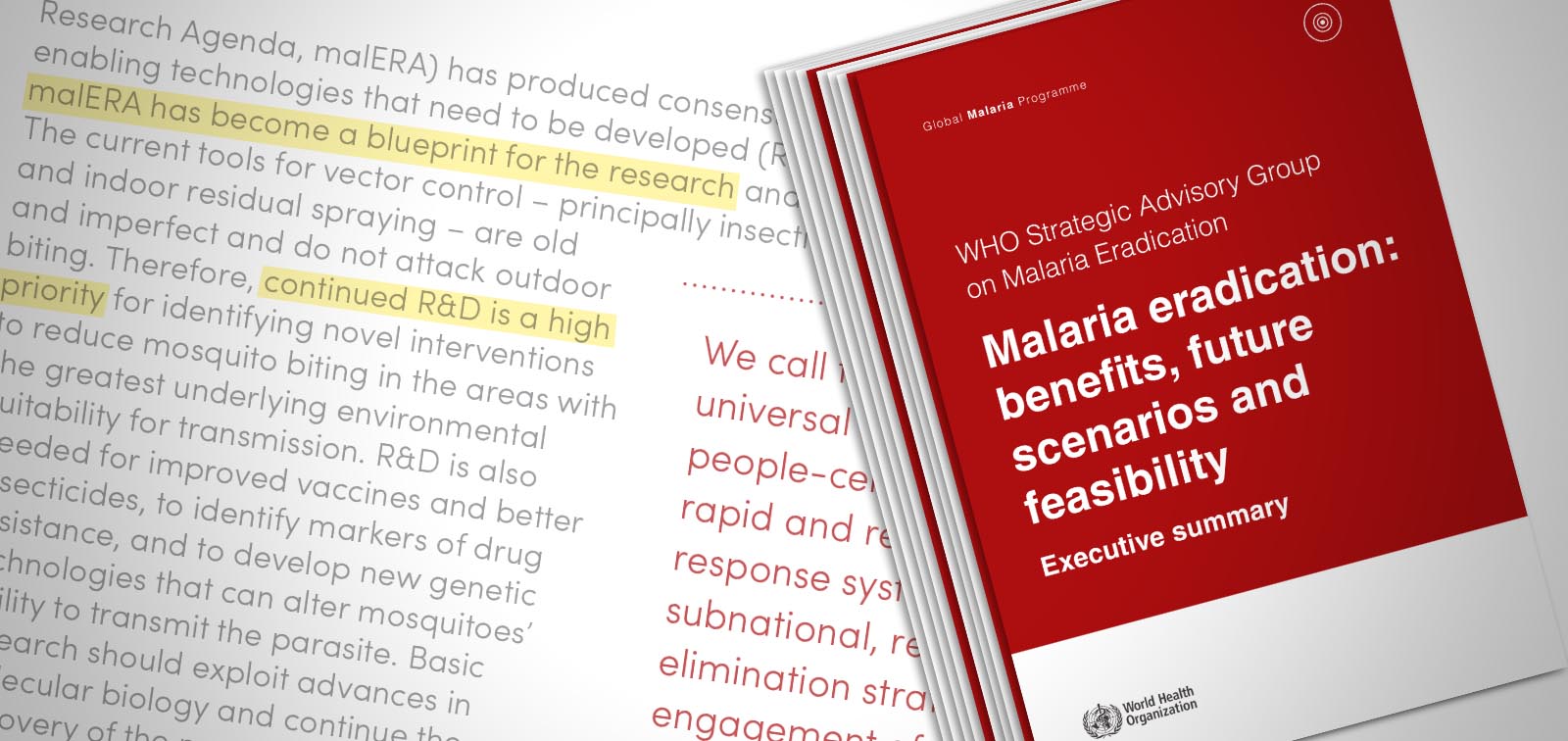Malaria Eradication is Feasible, but Needs Innovation
The WHO report highlights the need to develop new knowledge and tools, building on the Malaria Eradication Research Agenda (malERA) blueprint
27.08.2019
In 2016, at the request of the WHO Director General, the Strategic Advisory Group on Malaria Eradication (SAGme) was formed to advise WHO on future scenarios for malaria, including whether malaria eradication was feasible. WHO has just published the executive summary to its report “Malaria Eradication: benefits, future scenarios and feasibility”. The major conclusion is that there are no major biological or environmental barriers to eradication, but it will not be achieved with current tools or levels of investment. In fact, the report states that, with current tools, we will still have eleven million cases of malaria in Africa in 2050.
In 1955, the WHO declared the ambitious goal of malaria eradication, and while there was progress with elimination in some countries, the existing tools were not adequate to achieve this goal and the focus shifted to control. The disease came back with a vengeance, affecting the world’s most vulnerable populations: the very young and the poor (the great majority of deaths occur in children under five living in sub-Saharan Africa). Since 2000, there have been significant declines in malaria deaths and cases, raising the potential to consider, once again, the feasibility of eradicating malaria.
While SAGme concluded that eradication by a specific date is ‘not a promise we can make just yet’, they do stress that there is a clear agenda to achieve it.
Getting back on track
First of all, the world needs to get back on track to meet the global goals of 90% reduction in cases and deaths, as established by the Global technical strategy for malaria 2016-2030. For this, we need to focus on the countries with highest disease burden (the High burden to high impact response). Scaling up current malaria interventions between 2016 and 2030 to reach 90% of the population in the 29 countries with highest burden would prevent an additional 2 billion malaria cases and 4 million deaths over that period. Therefore, SAGme concludes, malaria control should be strengthened, independent of the decision to eradicate.
Going that extra mile
In order to cover the last – and most difficult – mile towards eradication, the priority right now is to establish the foundation for a successful effort, while guarding against the risk of failure.
Innovation: one of the cornerstones of this foundation is a renewed research agenda to develop the transformative tools and knowledge that will help achieve eradication. This agenda already exists. The Malaria Eradication Research Agenda (malERA) is the result of a global, collaborative effort coordinated by the Malaria Eradication Scientific Alliance (MESA), with headquarters at ISGlobal, a WHO Collaborating Centre for Malaria Control, Elimination and Eradication. In total, over 400 experts from around the world participated in malERA and its update (malERA Refresh) to produce consensus on the tools, strategies and enabling technologies that need to be developed to reach eradication. “Effectively, malERA has become a high-level blueprint for the research community,” says MESA chair Regina Rabinovich. “We need to exploit advances in genetics, molecular tools and new approaches to develop novel drugs and ways to target the mosquito, required to drive eradication,” she adds.



